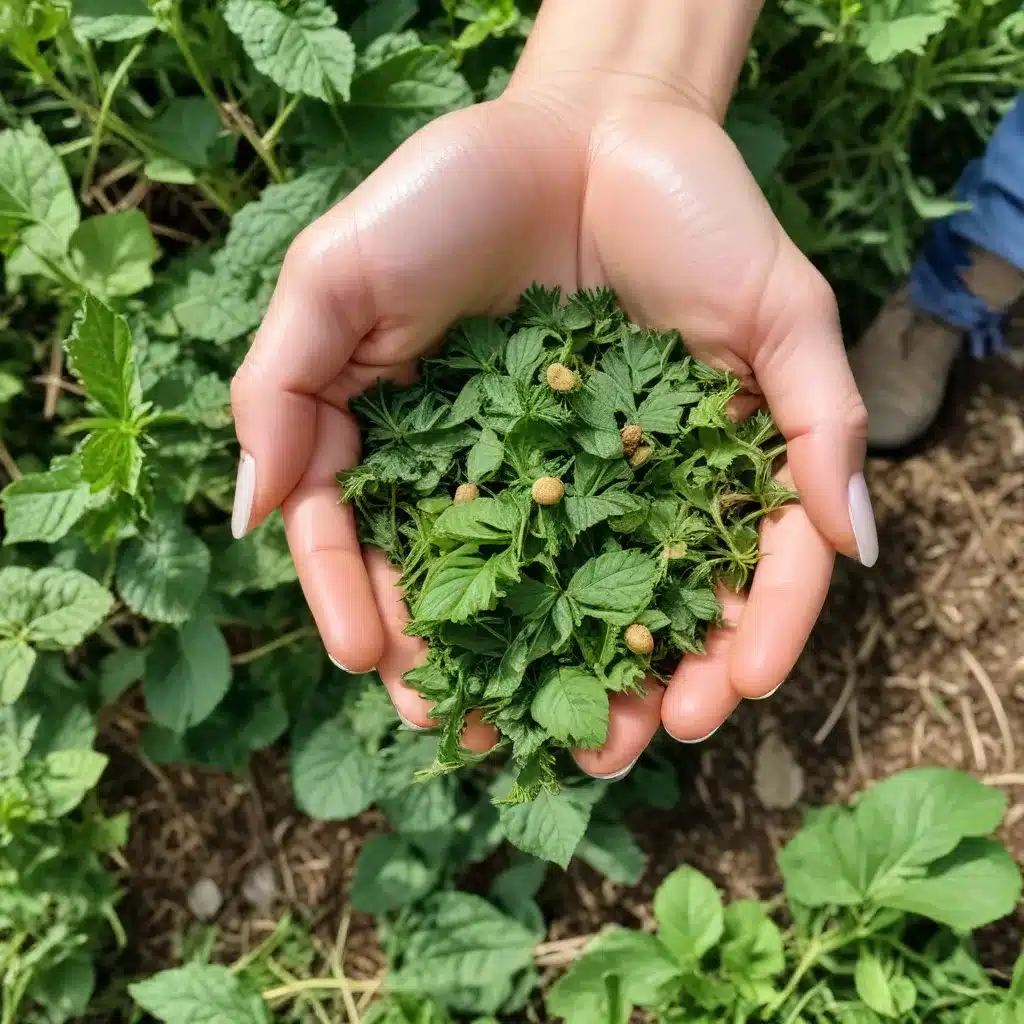
Nurturing Nature’s Gifts: Foraging for Wild Edibles on the Farm
The Bounty of Nature’s Gifts
At Crooked Pines Farm, we believe in celebrating the abundant edible treasures growing right beneath our feet. Our lush pastures, verdant forests, and vibrant meadows are teeming with a remarkable diversity of wild edible plants – from tender greens and nutrient-dense roots to flavorful berries and succulent fruits. By learning to identify and responsibly forage these botanical bounties, we can unlock a whole new realm of culinary delights and deepen our connection to the natural world.
Identifying Edible Wild Plants: Whether you’re a seasoned forager or just starting to explore the world of wild edibles, the first step is learning to recognize the different plants on your farm. Some common wild edibles include dandelion, chickweed, lamb’s quarters, purslane, wood sorrel, and wild garlic. Each plant has its own unique appearance, flavors, and optimal harvesting times throughout the seasons.
Seasonal Availability of Wild Edibles: The availability of wild edibles ebbs and flows with the changing seasons. In early spring, you might find tender ramps, fiddlehead ferns, and wild asparagus, while summer brings an abundance of berries, wild greens, and flowering plants like day lilies. Autumn offers a bounty of nuts, seeds, and fruits, such as persimmons, pawpaws, and serviceberries. Paying close attention to your local ecosystem will help you time your foraging excursions for maximum yield.
Sustainable Foraging Practices: It’s crucial to forage with care and respect for the land. Only take what you need, leaving behind ample plant matter for regeneration and to support wildlife. Avoid over-harvesting sensitive species, and consider transplanting some wild edibles to designated garden beds for future use. Educate yourself on responsible gathering techniques to ensure the long-term health of your farm’s natural ecosystems.
Preparing the Land for Foraging
At Crooked Pines, we view foraging as a key component of our holistic land management approach. By enhancing biodiversity and conserving native habitats, we create an environment that supports a thriving web of edible wild plants.
Enhancing Biodiversity on the Farm: We’ve carefully curated diverse polyculture plantings throughout our fields and forests, incorporating a mix of native trees, shrubs, and herbaceous plants. This encourages the growth of a wide variety of wild edibles while also providing food and shelter for beneficial insects, birds, and other wildlife.
Conserving Native Plant Habitats: Preserving undisturbed areas on the farm is essential for maintaining healthy populations of wild edibles. We leave some sections of our meadows and woodlands in a more natural, unmanaged state, allowing native plants to thrive without interference.
Integrated Pest Management Strategies: Instead of relying on harsh chemicals, we employ organic pest control methods that work in harmony with nature. By encouraging beneficial predators, using row covers, and strategically timing our plantings, we can minimize pest damage without harming the delicate balance of our farm’s ecosystems.
Foraging Techniques and Tools
Gathering wild edibles is an art form that has been passed down through generations. At Crooked Pines, we blend traditional knowledge with modern tools and techniques to ensure a safe and bountiful harvest.
Traditional Gathering Methods: Many Indigenous communities have long histories of sustainably foraging wild plants. We draw inspiration from these time-honored practices, such as using basket weaving to collect greens, digging sticks to unearth roots, and pruning shears to harvest flowers and fruits.
Modern Foraging Equipment: While respecting tradition, we also embrace helpful gadgets like plant identification apps, lightweight foraging bags, and dehydrators for preserving our wild-harvested bounty. These tools make our foraging endeavors more efficient and allow us to make the most of each season’s gifts.
Safety Considerations: Proper identification is crucial when it comes to wild edibles. We always double-check our plants against reliable field guides and consult experienced foragers to ensure we’re harvesting safe, non-toxic species. We also take care to avoid areas that may have been exposed to pesticides or other contaminants.
Culinary Delights from the Wild
Once we’ve gathered our wild edibles, the real fun begins in the kitchen! Our farm’s wild foods inspire a host of delectable dishes, from nutrient-packed salads to decadent desserts.
Incorporating Wild Edibles into Recipes: Whether it’s sautéed wild greens, pawpaw smoothies, or acorn flour pancakes, we love showcasing the unique flavors and textures of our foraged finds. These ingredients lend themselves beautifully to both savory and sweet preparations, adding depth and complexity to our farm-to-table meals.
Preserving and Storing Wild Harvests: To extend the enjoyment of our wild edibles, we employ a variety of preservation techniques. We dehydrate, ferment, and freeze our bounty to enjoy throughout the year. Pickled ramps, canned serviceberry jam, and dried mushrooms are just a few examples of how we make the most of each season’s offerings.
Nutritional Benefits of Wild Foods: Many wild edibles are powerhouses of vitamins, minerals, and other beneficial compounds. Compared to their cultivated counterparts, these plants often contain higher concentrations of antioxidants, fiber, and essential nutrients. Incorporating wild edibles into our diets is a delicious way to boost our overall health and well-being.
At Crooked Pines Farm, we believe that foraging is an essential part of a regenerative, nature-based lifestyle. By learning to identify, harvest, and prepare wild edibles, we not only nourish our bodies but also deepen our connection to the land and its rhythms. We invite you to join us on this journey of discovery, as we uncover the bountiful gifts that nature has to offer right in our own backyard.


